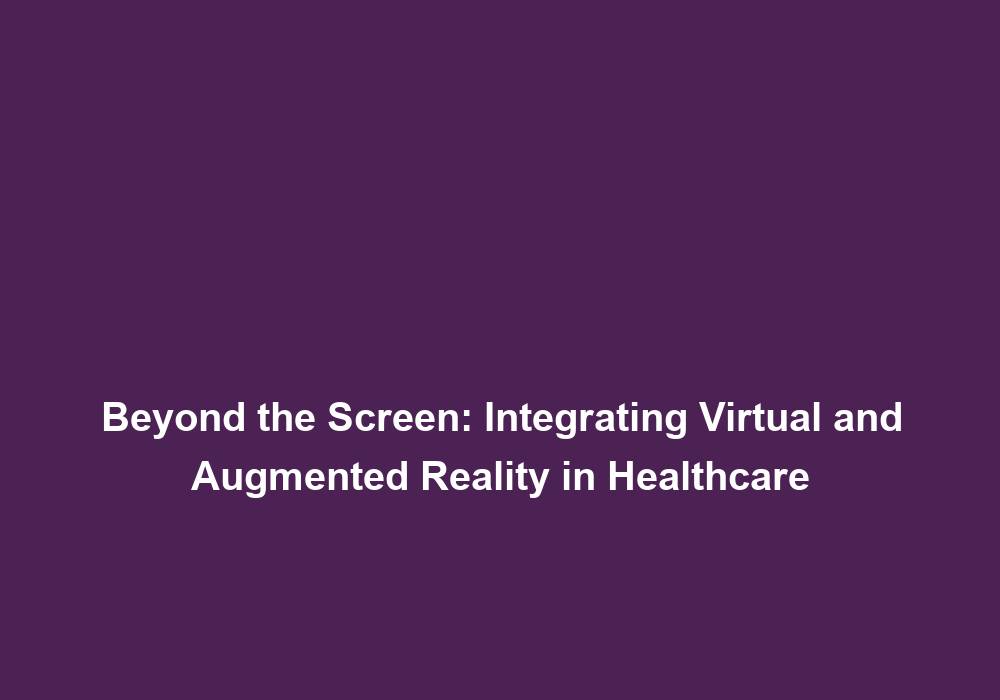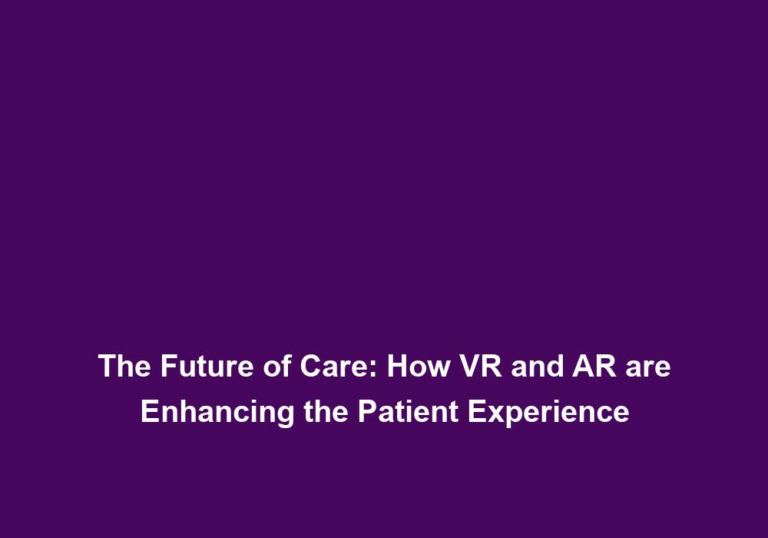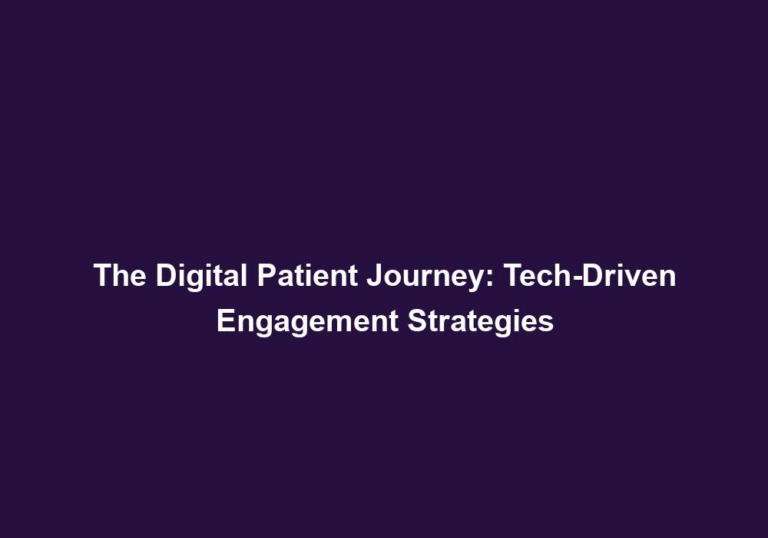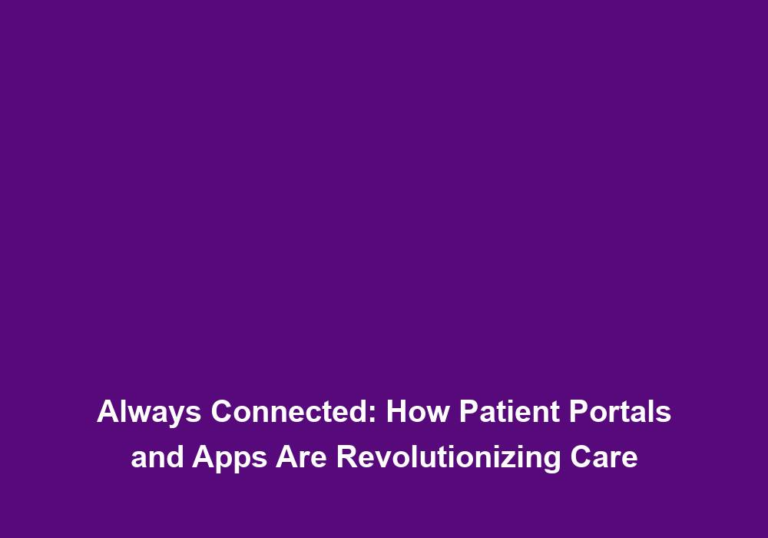Beyond the Screen: Integrating Virtual and Augmented Reality in Healthcare
In recent years, the healthcare industry has witnessed remarkable advancements in technology that have revolutionized patient care. One such innovation that holds tremendous promise is the integration of virtual and augmented reality (VR/AR) into healthcare practices. These immersive technologies have the potential to transform various aspects of healthcare, ranging from medical education and training to patient treatment and therapy. This article explores the incredible possibilities that arise when we go beyond the screen and delve into the world of VR/AR in healthcare.
Enhancing Medical Education and Training
Medical education plays a crucial role in shaping competent healthcare professionals. By integrating VR/AR into medical education programs, the learning experience for students can be significantly enhanced. Instead of relying solely on textbooks and lectures, immersive and interactive simulations provided by virtual and augmented reality can simulate real-life scenarios. This allows medical students to gain hands-on experience in a safe environment, improving their understanding and retention of knowledge.
With VR/AR, medical students can not only visualize complex anatomical structures but also explore human organs in a three-dimensional virtual space. They can even practice critical procedures such as simulated surgeries, enabling them to develop their skills and build confidence without risking patient safety. Moreover, VR/AR fosters collaboration among students, allowing them to work together in virtual environments and learn from each other’s perspectives. This not only enhances their teamwork and communication skills but also breaks down geographical barriers, enabling remote learning and collaboration.
Some ways in which VR/AR can enhance medical education and training include:
- Simulating realistic medical scenarios, such as emergency situations or surgical procedures, to provide students with hands-on experience.
- Creating interactive virtual anatomy models that allow students to explore different organ systems and understand their intricacies.
- Facilitating virtual rounds and case discussions, where students can analyze patient cases and propose treatment plans in a collaborative virtual environment.
- Offering virtual mentoring and guidance from experienced healthcare professionals, providing personalized feedback and support to students.
Improving Patient Treatment and Therapy
Virtual and augmented reality have enormous potential to improve patient treatment and therapy across various medical conditions. These technologies can provide immersive experiences that help alleviate pain, reduce anxiety, and enhance patient outcomes.
In the field of mental health, VR/AR can be used to create virtual environments that simulate exposure therapy for patients with phobias, anxiety disorders, or post-traumatic stress disorder (PTSD). By gradually exposing patients to their fears in a controlled environment, VR/AR therapy can help them overcome their anxieties and fears more effectively. For example, a patient with a fear of heights can be exposed to virtual scenarios that gradually increase the height, helping them build resilience and reduce their anxiety levels.
For chronic pain management, VR/AR can offer distraction techniques, providing patients with immersive experiences that divert their attention away from pain. During painful medical procedures, patients can be immersed in a relaxing virtual environment, reducing their perception of pain and discomfort. By occupying the patient’s senses with pleasant and engaging virtual experiences, VR/AR can effectively reduce pain and improve overall well-being.
Furthermore, VR/AR can be utilized in physical therapy and rehabilitation to enhance motivation and engagement. By providing gamified exercises in virtual environments, patients undergoing physical therapy can experience a sense of enjoyment and achievement, making the rehabilitation process more enjoyable. Therapists can create personalized rehabilitation programs that target specific areas of improvement, such as balance or coordination, utilizing interactive tools and virtual guidance. This not only increases patient compliance but also accelerates the recovery process, leading to better outcomes.
Revolutionizing Rehabilitation and Physical Therapy
Virtual and augmented reality have the potential to revolutionize rehabilitation and physical therapy by providing engaging and interactive experiences for patients. These technologies can enhance motivation, increase engagement, and improve motor skills during the recovery process.
For individuals undergoing physical therapy, VR/AR can provide gamified exercises that make rehabilitation more enjoyable. By immersing patients in virtual environments and utilizing interactive tools, therapists can create personalized rehabilitation programs that target specific areas of improvement. Patients can engage in virtual activities that involve movements and exercises designed to enhance their motor skills, balance, and coordination. This approach not only increases patient compliance but also accelerates the recovery process, leading to improved functional outcomes.
Additionally, VR/AR can be used for cognitive rehabilitation, helping patients regain cognitive functions after brain injuries or strokes. Through interactive activities and simulations, patients can practice memory exercises, problem-solving, and decision-making in a safe and controlled environment. Virtual environments can be tailored to provide cognitive challenges specific to each patient’s needs, promoting brain plasticity and facilitating the recovery of cognitive abilities.
Some ways in which VR/AR can revolutionize rehabilitation and physical therapy include:
- Providing virtual environments that simulate real-life situations and activities, allowing patients to practice movements and exercises in a controlled and safe setting.
- Offering gamified exercises and activities that motivate patients to actively participate in their rehabilitation process.
- Tracking and analyzing patients’ movements and progress in real-time, providing therapists with valuable data for optimizing treatment plans.
- Enabling remote rehabilitation and teletherapy, allowing patients to receive therapy sessions and guidance from healthcare professionals without the need for in-person visits.
Advancing Surgical Procedures and Planning
Virtual and augmented reality technologies are also reshaping surgical procedures and planning. By utilizing VR/AR, surgeons can visualize complex anatomical structures, plan surgeries more efficiently, and improve patient outcomes.
With the help of VR/AR, surgeons can simulate surgeries before entering the operating room, allowing them to practice and refine their techniques. This virtual rehearsal enables surgeons to identify potential challenges, visualize the best surgical approach, and reduce the risk of complications during the actual procedure. By gaining a deeper understanding of the patient’s anatomy and practicing complex steps in a virtual environment, surgeons can enhance their surgical skills and confidence.
Furthermore, VR/AR can assist in surgical training, providing a platform for residents and aspiring surgeons to hone their skills. Through realistic simulations and virtual guidance, trainees can develop their surgical expertise in a controlled and risk-free environment. They can practice various surgical procedures, learn from their mistakes, and receive feedback from experienced surgeons. This immersive training approach not only accelerates the learning curve but also enhances patient safety by ensuring that surgeons are well-prepared and competent.
Some ways in which VR/AR can advance surgical procedures and planning include:
- Creating patient-specific virtual models based on medical imaging data, allowing surgeons to perform preoperative planning and practice the surgery in a realistic virtual environment.
- Providing haptic feedback and realistic tissue interactions in virtual simulations, enabling surgeons to refine their motor skills and hand-eye coordination.
- Facilitating collaborative surgical planning and consultations, where multiple healthcare professionals can visualize and discuss surgical approaches in a shared virtual space.
- Assisting in complex surgeries by overlaying real-time imaging data onto the surgeon’s field of view, enhancing precision and reducing the risk of errors.
Addressing Challenges and Future Implications
While the integration of virtual and augmented reality in healthcare brings a multitude of benefits, it also presents challenges that need to be addressed. Some of the challenges include the high cost of VR/AR equipment, concerns regarding data privacy and security, and the need for extensive training to utilize these technologies effectively.
However, as technology continues to advance and costs decrease, the potential of VR/AR in healthcare becomes increasingly viable. Efforts are being made to develop more affordable and accessible VR/AR devices, making them more accessible to healthcare institutions. Additionally, stringent data privacy and security measures are being implemented to protect patient information and ensure compliance with regulations.
The future implications of VR/AR in healthcare are vast and hold great promise. These technologies have the potential to further advance telemedicine and remote patient monitoring, enabling healthcare professionals to provide care and monitor patients from a distance. Surgical robotics can be enhanced by integrating VR/AR, allowing for more precise and minimally invasive procedures. Personalized treatment plans can be developed based on patient-specific virtual models, optimizing outcomes and reducing complications.
In conclusion, the integration of virtual and augmented reality in healthcare holds immense potential in transforming medical education, patient treatment, rehabilitation, and surgical procedures. From enhancing the learning experience for medical students to improving patient outcomes and revolutionizing surgical planning, VR/AR is poised to shape the future of healthcare. As we continue to explore the possibilities beyond the screen, the healthcare industry can embrace these immersive technologies and unlock new horizons in providing quality care.






